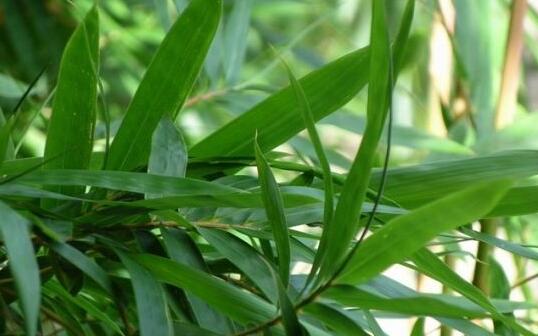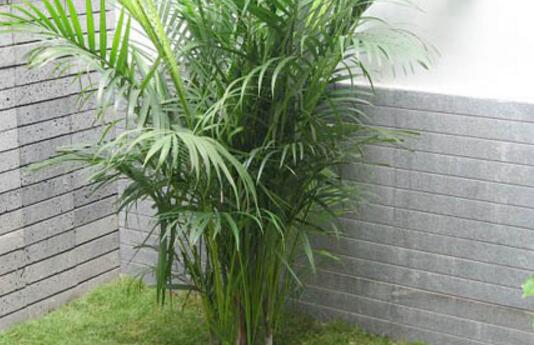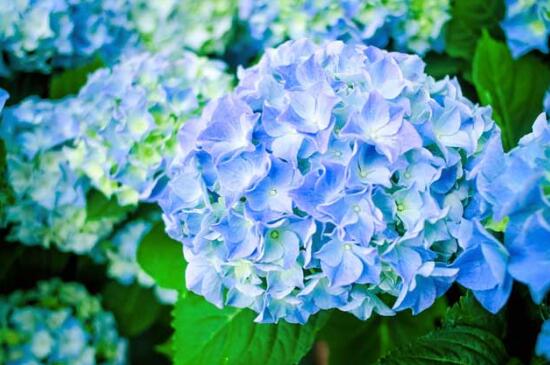How to apply fertilizer to Phyllostachys pubescens needs to know the choice of fertilizer and the method of fertilization.
When planting Phyllostachys pubescens, fertilization is essential, it can not only provide the nutrients needed for the growth of Phyllostachys pubescens, but also improve its immunity to the virus, but fertilization should not be too little or too much, so how to apply fertilizer? The editor will tell you the answer.
How to fertilize Phoenix tail bamboo

Too little fertilization will lead to slow plant growth, and may also lead to diseases and insect pests; while too much fertilization will lead to root rot, leaves fat and no luster, so in the culture methods of Phyllostachys pubescens, how to apply fertilizer has become a top priority.
What kind of fertilizer does Phoenix tail bamboo use?
1. Base fertilizer
The so-called base fertilizer refers to the fertilizer that should be applied at the bottom of the flowerpot when planting, which can be mixed with barnyard manure, bone meal, soil fertilizer and pond mud, or organic fertilizer can be mixed into the pot soil.
2. Nitrogen fertilizer
Nitrogen fertilizer can ensure that the leaves of Phyllostachys pubescens are green, and the leaves are more upright and upright, providing a lot of nutrients that can be needed during the growing period.
3. Phosphate and potassium fertilizer
The content of phosphorus in plants is second only to nitrogen and potassium. The photosynthesis, respiration and energy transfer of Phyllostachys pubescens all need the participation of phosphorus, while potassium fertilizer is beneficial to the metabolism of Phyllostachys pubescens.
II. Fertilization methods
1. When putting on the basin
How to fertilize Phoenix tail bamboo at this time? The answer is to apply base fertilizer, mix base fertilizer and basin soil, the amount of base fertilizer is 10-15% of that of basin soil, do not add too much base fertilizer.
2. Prophase of growth
Nitrogen fertilizer should be the main fertilizer at this time, fertilizing 1-2 times a month, nitrogen fertilizer can provide nitrogen, the main component of chlorophyll in leaves, if you want the leaves to be greener, nitrogen fertilizer is essential.
3. The period of vigorous growth (metaphase)
At this time, we should give priority to phosphate fertilizer, which can ensure the full photosynthesis of Phyllostachys pubescens, make the leaves more glossy, and make the stem grow more healthy and straight.
4. stable growth period (later stage)
During the stable growth period, the plant of Phyllostachys pubescens has been basically stereotyped, so how to apply fertilizer at this time? Potash fertilizer should be used as the main fertilizer, which can improve the resistance of Phyllostachys pubescens and ensure that it has enough nutrients in metabolism.
Note: no matter at any stage, do not apply too much fertilizer, topdressing with rotten cake fertilizer water, winter should stop fertilization, if too much fertilizer should be properly watered, and use radish seeds to absorb excess nutrients.
How to apply fertilizer and what kind of fertilizer for Phoenix tail bamboo?
Phoenix tail bamboo, formerly known as Guanyin bamboo, can not only decorate the environment and do potted plants, but also purify the air and absorb formaldehyde, so many people like to plant Phoenix tail bamboo. It is better to keep Phyllostachys pubescens in a ventilated place in spring, summer and autumn, and in a sunny place in winter. Phyllostachys pubescens prefers fertile land, so how to apply fertilizer and what fertilizer?
Fertilization methods of Phyllostachys pubescens:
1. Fertilizer is preferred, and thin fertilizer can be applied 2-3 times a month.
2. Phyllostachys pubescens should be fertilized with basic fertilizer before planting to ensure its nutrition.
3. The fertilization of Phyllostachys pubescens should be reduced or stopped after autumn.
What kind of fertilizer should be applied to Phoenix tail bamboo:
The fertilization of Phyllostachys pubescens should not only ensure the adequacy of nitrogen, phosphorus and potassium, but also assist the use of other fertilizers. It is best to keep the soil slightly acidic. Today, the editor will introduce a more practical fertilizer-Chenfeng biological flower special fertilizer. Chenfeng flower organic fertilizer has more nutrients in addition to nitrogen, phosphorus and potassium necessary for plant growth, as well as a variety of organic matter and trace elements, so as to improve soil permeability, long fertilizer effect and improve soil. It is suggested that Phyllostachys pubescens should be fertilized with more organic fertilizer and less chemical fertilizer, which can be diluted with water or buried around the plant to avoid the rhizome.
This is the end of the fertilization method of Phyllostachys pubescens. I believe we all have a certain understanding. I hope you can learn and use it and grow high-quality bamboos.
How to cultivate Phyllostachys pubescens
Phyllostachys pubescens is often used to decorate courtyards and rooms because of its dense bushes, short stems, beautiful branches and leaves. Then how to raise Phyllostachys pubescens? what is the breeding method of Phyllostachys pubescens? The following editor will introduce to you how to raise Phyllostachys pubescens and how to raise them.
[recommended by editor] suitable for home culture plant map coconut shell orchid soil where to put bamboo at home fengshui good orchid soil
Phoenix tail bamboo pictures
Growth habits of Phyllostachys pubescens
Phoenix tail bamboo (Latin name: bambusa multiplex), also known as Guanyin bamboo, rice bamboo, Jintou bamboo, Penglai bamboo, etc., originated in southern China. Like warm, humid and semi-shady environment, cold tolerance is poor, not resistant to strong light exposure, afraid of waterlogging, suitable for fertile, loose and well-drained loam, winter temperature is not lower than 0 ℃. Phyllostachys pubescens has dense clusters of plants, short stems and beautiful branches and leaves, which are often used for potted plants, decorating small courtyards and rooms, and also for making bonsai or as a low hedge material.
Phyllostachys pubescens likes to grow in the semi-shade where there is sunshine, and the requirement for the soil is 4.5-7, afraid of heavy alkaline soil. Phyllostachys pubescens is not very cold-resistant, the lowest temperature for growth should not be lower than 0 ℃, and it requires more water, but it can not accumulate water. For the choice of fertilizer, it is best to use organic fertilizer.
Growth habits of Phyllostachys pubescens
How to raise Phoenix tail bamboo
Phyllostachys pubescens is an evergreen tufted shrub, mostly in tropical and subtropical regions. It likes warm, humid and semi-ventilated growth environment, has poor cold resistance, is not resistant to strong light exposure, likes dampness and fear stagnant water, and the winter temperature is not lower than 0 ℃. Phyllostachys pubescens likes acidic, slightly acidic or neutral soil, and it is suitable to cultivate sandy soil with fertile, loose and good drainage, while organic fertilizer is the main fertilizer, and nitrogen fertilizer can be applied once or twice a month during the growth period.
Phyllostachys pubescens can be planted by means of ramet, seed propagation and cutting propagation. Phyllostachys pubescens can be placed in a cool environment, but because it likes warmth, it should be protected against cold in winter and can be planted indoors. Phyllostachys pubescens can be fertilized during the growing period, and it will grow more vigorously, usually 1-2 times a year. Phyllostachys pubescens should be watered more, especially in the early morning and evening. Because Phyllostachys pubescens likes a humid environment, it can occasionally loosen the soil, but do not hurt the rhizome of Phyllostachys pubescens.
Pots of Phyllostachys pubescens
The planting of Phyllostachys pubescens should be carried out from February to March. Potted plant, change the pot every 2-3 years, take out the old bamboo, remove the resident soil, cut off the small underground stem and old bamboo, and add fertile soil. Keep the basin soil moist during the growing period, keep it in a semi-shady place, spray water to the leaves frequently, and apply fertilizer once a month. Move indoors to the sunny place in winter.
Culture methods of Phyllostachys pubescens
1. Reproduction
The propagation of Phyllostachys pubescens is commonly used in ramet, seed propagation and cutting propagation, but because bamboo is not easy to get species and cuttings are difficult to root, it is mainly based on ramet propagation. Ramet propagation is often carried out in early spring combined with changing pots. When dividing a plant, let each shoot bud bring at least one old bamboo, and retain the fibrous root to ensure the survival rate. New plant cultivation should have a moderate pot, and cultivate fertile soil, pay attention to watering, maintain a moist state, and can grow rapidly in a semi-shady place.
Culture methods of Phyllostachys pubescens
2. Cultivation
When choosing a suitable cultivation season, the cultivation should be carried out in March, when the mother bamboo has a high germination rate and is the easiest to survive. Choose the ideal mother bamboo. The mother bamboo should grow healthily, free from diseases and insect pests, the stem bud eye is enlarged, the fibrous root is well developed, and the bamboo age is better in 2012. Planted in time. If long-distance transportation is really needed, it should be watered and moisturized in a cool shelter and properly handled during packaging to prevent damage to the root eye and vibration of the lodging soil. Apply sufficient base fertilizer before planting to ensure adequate nutrition. Choose soft and fine soil, first fill in the bottom of the hole, then apply rotten stable fertilizer, mix well with the topsoil, put the mother bamboo down, cover the soil layer by layer, and cover the soil slightly 2 cm to 3 cm deeper than the original soil of the mother bamboo. Pour enough water to fix the root. Watering in time after planting, be sure to water thoroughly for the first time, and then reduce the amount of water appropriately, as long as it is wet and dry.
3. Lighting
Phoenix tail bamboo happy light, indoor maintenance in spring, summer, autumn three seasons near the south windowsill ventilation, where there is plenty of sunshine in winter, it can grow well. If put outdoor culture, spring, autumn season can receive more light, summer should pay attention to shading, avoid strong light exposure, otherwise branches and leaves are easy to yellowing, affecting beauty.
Photo of Phoenix tail bamboo culture
4. Temperature
Phyllostachys pubescens is an evergreen tufted shrub. Like warm, humid and semi-overcast environment. Cold resistance is slightly poor, not resistant to strong light exposure, afraid of waterlogging, suitable for fertile, loose and well-drained loam, the winter temperature is not lower than 0 degrees.
5. Soil
Phyllostachys pubescens likes acidic, slightly acidic or neutral soil, and the family pot can choose the mixed culture soil of rotten leaf soil, garden soil and river sand, and avoid heavy and alkaline soil.
6. Watering
Watering should be appropriate during the growth period and keep the basin soil moist. The leaves should be sprayed with clean water frequently in dry and hot summer seasons to keep the leaves green.
Pictures of farmed Phoenix tail bamboo
7. Fertilization
During the growth period, Phyllostachys pubescens needs to apply liquid fertilizer every 20 days. Phyllostachys pubescens fertilizer is mainly organic fertilizer, liquid fertilizer can be used mature thin bean cake water, or compound liquid fertilizer. Fertilization should be stopped in winter.
8. Pruning
The old pole of Phyllostachys pubescens gradually withered in the process of growth, and should be cut off in time to maintain a graceful posture. If the Phoenix tail bamboo is not pruned, it will grow unrestrained and lose its better ornamental quality. In the growing season, Phyllostachys pubescens can easily draw tender stems from the rhizosphere, which rises fiercely and affects the overall composition of bonsai. The overgrown parts and weak branches can be cut off, and if the Phoenix tail bamboo grows too densely, it also needs sparse treatment.
9. Change the basin
Compared with other small potted plants, the root system of Phyllostachys pubescens is a little large, which is related to the problem of changing pots. Generally, the pots are changed every two years, and the fertile soil can be configured by itself. When choosing soil, attention should be paid to sandy soil. Phyllostachys pubescens can not grow in a clay environment.
Pictures of outdoor Phoenix tail bamboo
10. Disease
Phyllostachys pubescens often occurs leaf blight and rust. 65% Dysen zinc wettable powder is used to control leaf blight and 50% verapamil wettable powder 2000 times to control rust. Insect pests are harmful to scale insects and aphids and are sprayed with 1500 times of omethoate EC.
Matters needing attention in Culture of Phyllostachys pubescens
1. Potted Phyllostachys pubescens should be moved to an outdoor shady place in summer, and pay attention to watering more, keep the basin soil moist, spray water to the leaves, and sprinkle water on the ground to keep the air moist in order to make the branches and leaves green. Phoenix tail bamboo likes to be wet and afraid of stagnant water. after the basin is installed, the water should be watered thoroughly for the first time, and the basin soil should be kept moist after that. Do not water too much, otherwise the roots will rot easily.
Matters needing attention in Culture of Phyllostachys pubescens
2. Phyllostachys pubescens is afraid of stagnant water, in addition to watering thoroughly for the first time, as long as it keeps the basin soil moist, otherwise it is easy to rot and whip the roots. Phoenix tail bamboo likes to be wet. If the pot soil is short of water, the bamboo leaves will curl. At this time, it is time to water them. After watering, the bamboo leaves will unfold. Generally, it is watered once every 1-2 days on average in summer and less in winter, but the basin soil should be moist to prevent "dry freezing".
3. In the high temperature season, the potted bamboo should be moved to a cool place to avoid the hot sun, and water should be sprayed to the leaves to keep the leaves green. In winter, the potted bamboo should be moved to the leeward or indoors.
4. during the growth period, liquid fertilizer should be applied every 20 days or so. Phyllostachys pubescens fertilizer is mainly organic fertilizer, liquid fertilizer can be used mature thin bean cake water, or compound liquid fertilizer. Fertilization should be stopped in winter.
5. The pots of Phyllostachys pubescens do not need to be changed every year, generally every two years. Phyllostachys pubescens prefers acidic, slightly acidic or neutral soil. The potted culture soil is made of 1 part of rotten leaf soil, 0.5 part of garden soil, and a small amount of river sand and rice chaff ash. Avoid sticky heavy and alkaline soil.
Culture picture of Phyllostachys pubescens
6. The bonsai of Phoenix tail bamboo pays attention to posture and charm, and the branches must be bent, dense and uneven. If there are too many stems during the vigorous growth period, there will be a feeling of dense air blockage, which will affect the overall ornamental effect of bonsai, so the overdense branches should be thinned according to the growth situation, and special attention should be paid to cutting off the weak stems.
Conclusion: Phyllostachys pubescens is elegant and elegant, and it is a good indoor foliage plant. If you understand how to raise Phyllostachys pubescens and the culture method of Phyllostachys pubescens, we will certainly be able to cultivate beautiful Phyllostachys pubescens. The above is about how to raise Phyllostachys pubescens, the relevant introduction of breeding methods, I hope it can be helpful to everyone.
Extended reading:
Difference between loose-tailed sunflower and Phyllostachys pubescens | Culture method of Dryopteris Dryopteris | Culture method of cactus | Culture method of Catharanthus roseus | Culture method of peacock bamboo taro
Culture method of synthetic taro | Culture method of loose-tailed sunflower | Culture method of pocket coconut | Culture method of Brazilian wood | Culture method of hydroponic white palm
- Prev

How to raise Phyllostachys pubescens, the culture methods and matters needing attention / environment are the key.
It is well known that in the efficacy and function of Phyllostachys pubescens, it has five uses, such as air purification, ornamental effect, medicinal effect and so on, but in order to give full play to these effects, it is necessary to raise it well.
- Next

How to raise hydrangea, the cultivation methods and precautions / light of potted hydrangea should be less.
Hydrangea, friends who have seen it should be impressed. It is dignified and elegant, with large and beautiful flowers and rich colors, so it is deeply loved by flower friends. In life, many people want to plant hydrangea pots at home, but they don't know how to raise hydrangeas. In this regard, the editor carefully sorted out the culture methods and matters needing attention of hydrangea.
Related
- Fuxing push coffee new agricultural production and marketing class: lack of small-scale processing plants
- Jujube rice field leisure farm deep ploughing Yilan for five years to create a space for organic food and play
- Nongyu Farm-A trial of organic papaya for brave women with advanced technology
- Four points for attention in the prevention and control of diseases and insect pests of edible fungi
- How to add nutrient solution to Edible Fungi
- Is there any good way to control edible fungus mites?
- Open Inoculation Technology of Edible Fungi
- Is there any clever way to use fertilizer for edible fungus in winter?
- What agents are used to kill the pathogens of edible fungi in the mushroom shed?
- Rapid drying of Edible Fungi

